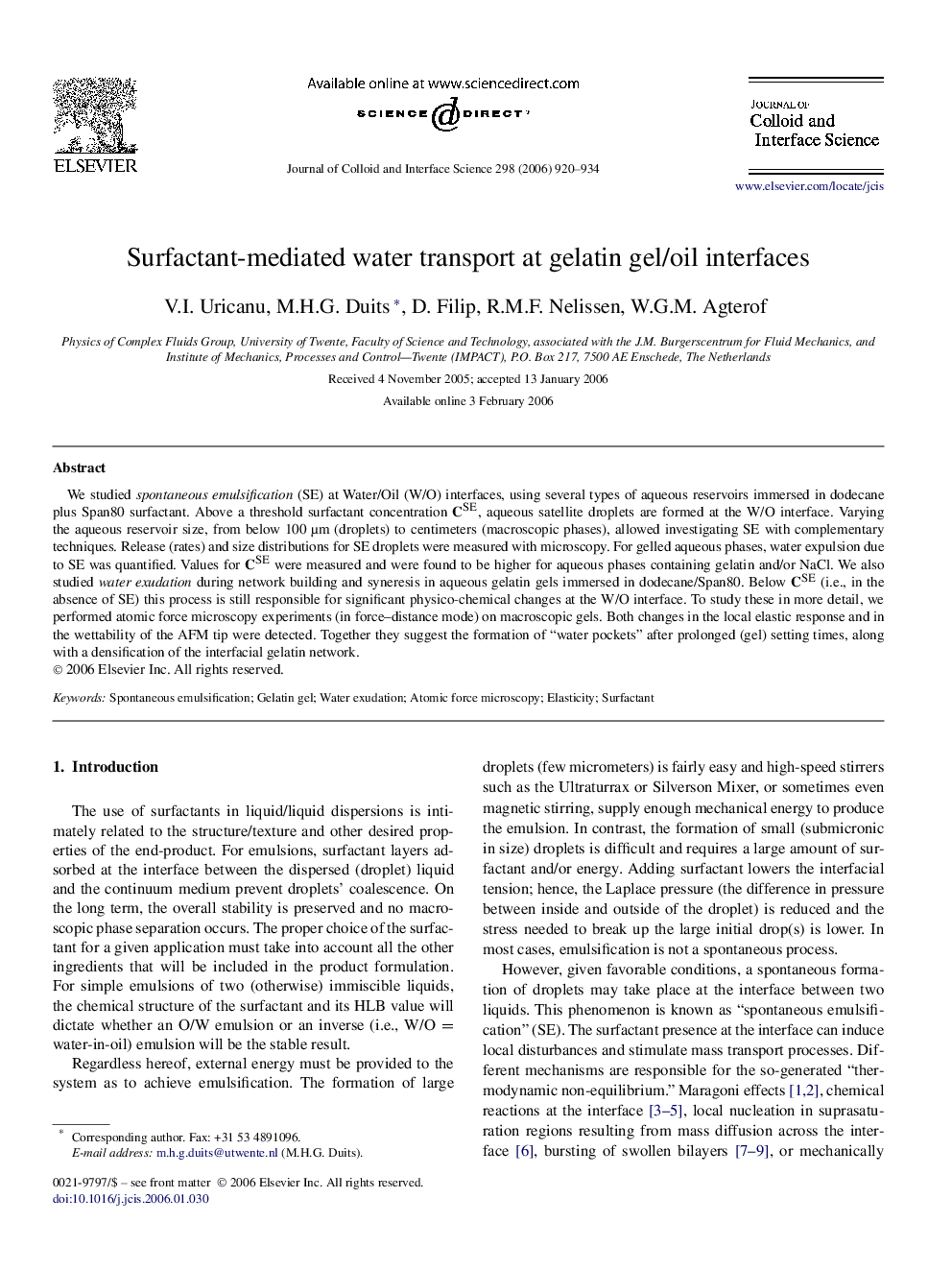| Article ID | Journal | Published Year | Pages | File Type |
|---|---|---|---|---|
| 613713 | Journal of Colloid and Interface Science | 2006 | 15 Pages |
We studied spontaneous emulsification (SE) at Water/Oil (W/O) interfaces, using several types of aqueous reservoirs immersed in dodecane plus Span80 surfactant. Above a threshold surfactant concentration CSECSE, aqueous satellite droplets are formed at the W/O interface. Varying the aqueous reservoir size, from below 100 μm (droplets) to centimeters (macroscopic phases), allowed investigating SE with complementary techniques. Release (rates) and size distributions for SE droplets were measured with microscopy. For gelled aqueous phases, water expulsion due to SE was quantified. Values for CSECSE were measured and were found to be higher for aqueous phases containing gelatin and/or NaCl. We also studied water exudation during network building and syneresis in aqueous gelatin gels immersed in dodecane/Span80. Below CSECSE (i.e., in the absence of SE) this process is still responsible for significant physico-chemical changes at the W/O interface. To study these in more detail, we performed atomic force microscopy experiments (in force–distance mode) on macroscopic gels. Both changes in the local elastic response and in the wettability of the AFM tip were detected. Together they suggest the formation of “water pockets” after prolonged (gel) setting times, along with a densification of the interfacial gelatin network.
Graphical abstractAbove a threshold concentration, CSECSE, of Span 80 in dodecane, satellite droplets are expelled from an aqueous reservoir. Values for CSECSE were found to be higher for aqueous phases containing gelatin and/or NaCl. Below CSECSE, gelatin gel syneresis is responsible for significant physico-chemical changes at the gel/oil interface.Figure optionsDownload full-size imageDownload as PowerPoint slide
